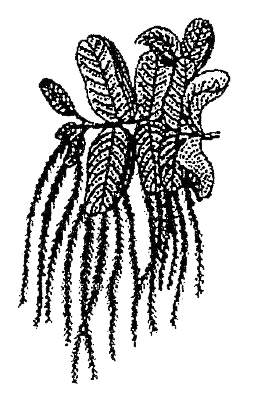Select the incorrect option w.r.t. blue green algae.
It adds organic matter to the soil
It increases soil fertility
It reduces alkalinity of soil
It is restricted to terrestrial environment only
The correct Answer is:D
To solve the question regarding the incorrect option with respect to blue-green algae, we can analyze each option provided.
1. Understanding Blue-Green Algae:
- Blue-green algae, also known as cyanobacteria, are photosynthetic microorganisms that can be found in various environments.
2. Evaluating the First Option:
- Statement: "It adds organic matter to the soil."
- Analysis: This statement is correct. Blue-green algae perform photosynthesis and contribute organic matter to the soil, enhancing its quality.
3. Evaluating the Second Option:
- Statement: "It increases soil fertility."
- Analysis: This statement is also correct. The organic matter produced by blue-green algae improves soil fertility, allowing for better crop growth.
4. Evaluating the Third Option:
- Statement: "It reduces alkalinity of the soil and increases acidity."
- Analysis: This statement is misleading. While blue-green algae can influence soil pH, they do not necessarily reduce alkalinity and increase acidity in a straightforward manner. This statement requires careful consideration, but it is not the most incorrect.
5. Evaluating the Fourth Option:
- Statement: "It is restricted to terrestrial environment only."
- Analysis: This statement is incorrect. Blue-green algae are found in both terrestrial and aquatic environments, including freshwater, marine, and brackish waters.
6. Conclusion:
- After evaluating all options, the incorrect statement regarding blue-green algae is the fourth option, which claims they are restricted to terrestrial environments only.
Final Answer:
The incorrect option with respect to blue-green algae is: "It is restricted to terrestrial environment only."
---
- Blue-green algae, also known as cyanobacteria, are photosynthetic microorganisms that can be found in various environments.
- Statement: "It adds organic matter to the soil."
- Analysis: This statement is correct. Blue-green algae perform photosynthesis and contribute organic matter to the soil, enhancing its quality.
- Statement: "It increases soil fertility."
- Analysis: This statement is also correct. The organic matter produced by blue-green algae improves soil fertility, allowing for better crop growth.
- Statement: "It reduces alkalinity of the soil and increases acidity."
- Analysis: This statement is misleading. While blue-green algae can influence soil pH, they do not necessarily reduce alkalinity and increase acidity in a straightforward manner. This statement requires careful consideration, but it is not the most incorrect.
- Statement: "It is restricted to terrestrial environment only."
- Analysis: This statement is incorrect. Blue-green algae are found in both terrestrial and aquatic environments, including freshwater, marine, and brackish waters.
- After evaluating all options, the incorrect statement regarding blue-green algae is the fourth option, which claims they are restricted to terrestrial environments only.
The incorrect option with respect to blue-green algae is: "It is restricted to terrestrial environment only."
Topper's Solved these Questions
Similar Questions
Knowledge Check
select the correct option w.r.t. Marsilea
AHeterosporous vascular spermatophyteBHeterosporous vascular embryophyteCHomosporous vascular crytogamDHomosporous non vascular embryophyteselect the correct option w.r.t. producers
AherbivorousBtransducerCsecondary carnivorousDall except (2)Select incorrect option w.r.t. given diagram
 AHeterosporousBAquatic fernCBelongs to class pteropsidaDGametophytic main plant body
AHeterosporousBAquatic fernCBelongs to class pteropsidaDGametophytic main plant body
Select the incorrect option w.r.t. male reproductive system of a flower.
View SolutionSelect the incorrect option w.r.t. salient features of genetic code.
View SolutionSelect the incorrect option w.r.t. mycoplasma.
View SolutionSelect the incorrect option (w.r.t tissue culture)
View SolutionSelect correct option w.r.t. heterogametes of algae. Cladophora, Chlamydomonas, Fucus, Ulothrix, Volvox, Chara, Spirogyra
View Solution
